VMO strengthening exercises are crucial for knee health, targeting the vastus medialis oblique muscle. They enhance rehabilitation, prevent injuries, and improve muscle balance and knee stability effectively.
1.1 Understanding the VMO Muscle and Its Importance
The vastus medialis oblique (VMO) muscle is a critical component of the quadriceps group, located on the inner aspect of the thigh. It plays a vital role in knee stability and patellar tracking, ensuring proper movement and alignment of the kneecap. The VMO is essential for activities like walking, running, and climbing stairs, as it helps control the knee during flexion and extension. Weakness or imbalance in the VMO can lead to issues such as patellofemoral pain syndrome or poor knee mechanics. Strengthening this muscle is particularly important for individuals with knee injuries or conditions like osteoarthritis, as it enhances joint stability and reduces the risk of further damage.
1.2 Benefits of VMO Strengthening for Knee Health
Strengthening the VMO offers numerous benefits for knee health, including improved joint stability, enhanced patellar tracking, and reduced risk of injuries. It alleviates pain associated with conditions like patellofemoral pain syndrome and knee osteoarthritis by strengthening the surrounding muscles. Additionally, VMO exercises promote better muscle balance, preventing imbalances that can lead to poor knee mechanics. This is particularly beneficial for athletes and individuals with active lifestyles, as it enhances performance and reduces injury risk. Regular VMO strengthening also supports post-injury rehabilitation, helping restore function and mobility to the knee. Overall, targeting the VMO is a cornerstone of comprehensive knee health management.
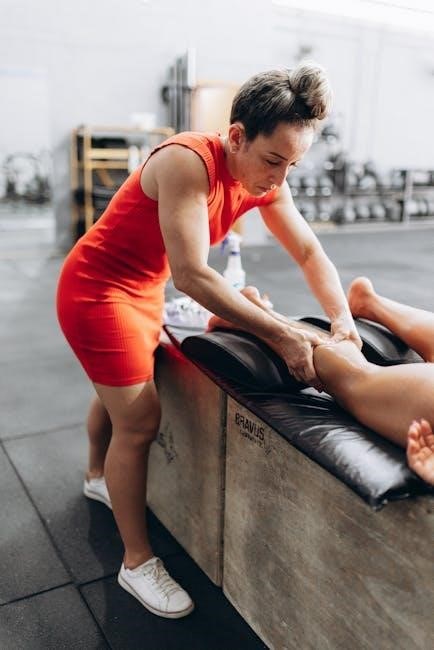
Key Exercises for VMO Strengthening
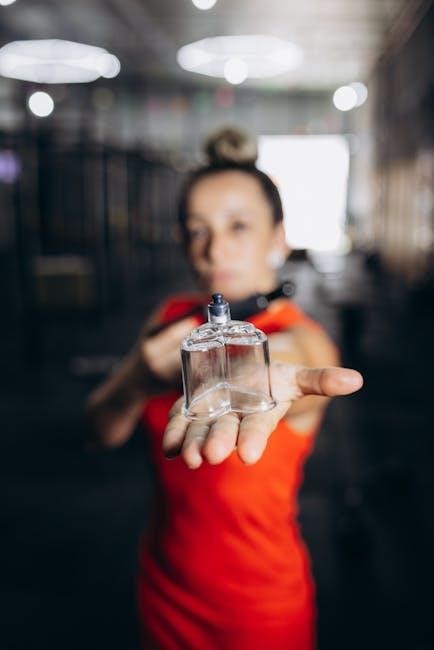
Key VMO strengthening exercises include isometric holds, straight leg raises, mini squats, step-ups, and clamshell exercises, which target muscle activation and improve knee stability.
2.1 Isometric VMO Exercises
Isometric VMO exercises involve contracting the muscle without movement, enhancing strength and control. Sit with a towel under the knee, externally rotate the foot, and straighten the knee, holding for 5-10 seconds. This targets the VMO effectively, improving knee stability and reducing pain. Regular practice strengthens the muscle, aiding in rehabilitation and preventing injuries. Proper form is essential, ensuring activation without strain.
2.2 Straight Leg Raises for VMO Activation
Straight leg raises are an effective isometric exercise for VMO activation. Lie on your back with one leg bent and the other straight. Tighten the quadriceps and VMO of the straight leg, then lift it to the height of the bent knee. Hold for 5-10 seconds before lowering slowly. This exercise strengthens the VMO without putting stress on the knee joint. Focus on proper form to ensure the VMO is engaged. Start with shorter holds and gradually increase duration as strength improves. Regular practice enhances knee stability and muscle balance, making it ideal for rehabilitation and injury prevention.

2.3 Mini Squats and Step-Ups
Mini squats and step-ups are excellent VMO strengthening exercises that target the quadriceps and improve knee stability. For mini squats, stand with feet shoulder-width apart, engage your core, and lower your body slightly, keeping the back straight. Focus on activating the VMO by pushing through your heels; Step-ups involve using a sturdy platform; step up with one leg, then lower slowly. Both exercises enhance functional movement and muscle balance. Start with low steps and gradually increase height as strength improves. These exercises are particularly beneficial for individuals with knee osteoarthritis or post-injury rehabilitation, promoting joint health and mobility effectively.
2.4 Clamshell Exercises for VMO Engagement
Clamshell exercises are effective for VMO engagement, targeting the inner thigh muscles to improve knee stability. Lie on your side with knees bent and feet touching. Slowly open your knees while keeping your heels together, squeezing your VMO. Hold for 5-10 seconds, then close slowly. Use a towel between your thighs for added resistance. Perform 10-15 repetitions per side. This exercise strengthens the VMO without putting excessive strain on the knee joint, making it ideal for rehabilitation and prevention programs. Variations include adding weights or resistance bands for progression, ensuring continued muscle engagement and growth.
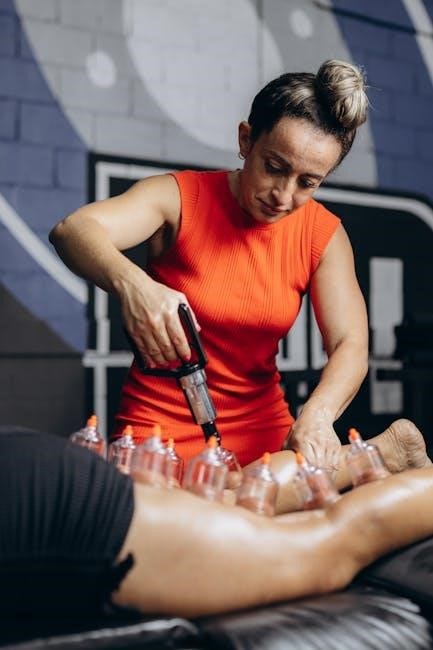
Progression and Variation in VMO Training
Progression in VMO training involves incorporating resistance bands, weights, and advanced exercises like mini squats, step-ups, and varying resistance levels to enhance muscle engagement and strength effectively.
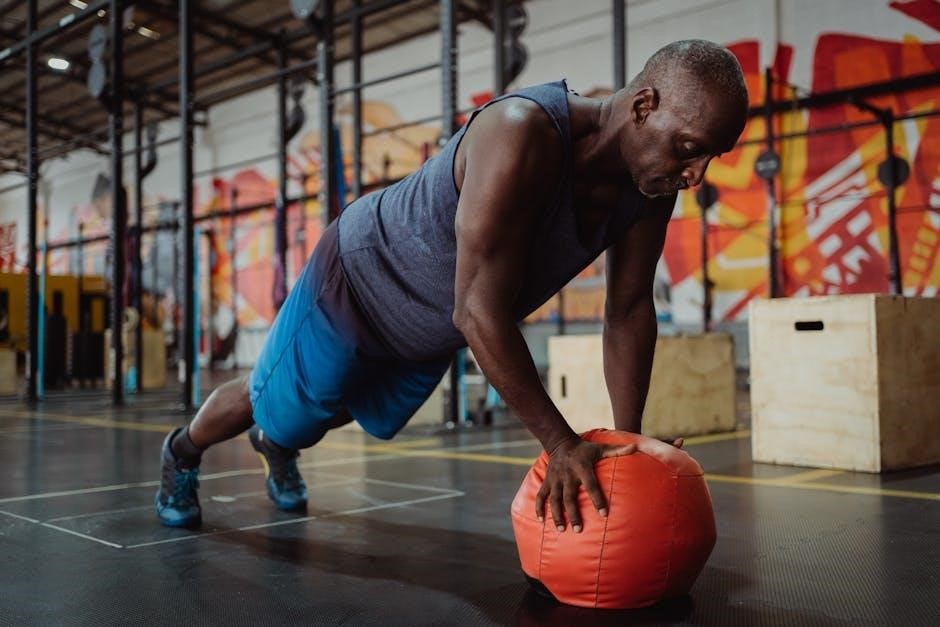
3.1 Advanced VMO Strengthening Techniques
Advanced VMO strengthening techniques involve dynamic exercises like single-leg squats and balance board training to enhance stability and muscle activation. Plyometric movements, such as jump squats, further challenge the VMO. These exercises build on foundational strength, improving functional movement and athletic performance. Incorporating resistance bands or weights increases intensity, targeting deeper muscle fibers. Progression may include unilateral exercises to address strength imbalances. Proper form and gradual progression are essential to maximize benefits and prevent injury. These techniques are particularly beneficial for individuals transitioning from rehabilitation to active fitness or sports, ensuring long-term knee health and optimal muscle function.
3.2 Incorporating Resistance Bands and Weights
Incorporating resistance bands and weights into VMO strengthening exercises enhances muscle activation and strength. Resistance bands are portable and versatile, allowing for progressive overload in exercises like banded leg presses or lateral walks. Weights, such as dumbbells or barbells, can be integrated into squats or step-ups to increase intensity. These tools help improve muscle endurance and power, particularly beneficial for advanced training. When using weights, focus on controlled movements to maintain proper form and target the VMO effectively. Resistance bands provide continuous tension, maximizing muscle engagement throughout the exercise range. Both methods are effective for progressing VMO training and achieving stronger, more stable knees; Always consult a professional to tailor resistance levels to your fitness goals and avoid injury.
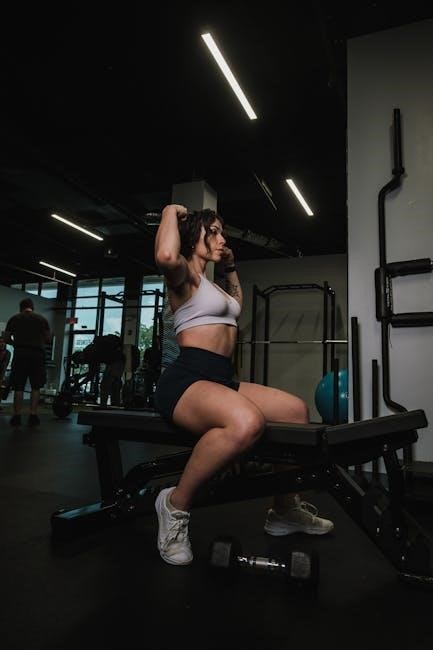
Rehabilitation and Prevention Programs
Targeted VMO exercises are essential for rehabilitation and injury prevention, enhancing knee stability and strength. They are particularly beneficial for individuals recovering from knee injuries or surgery.
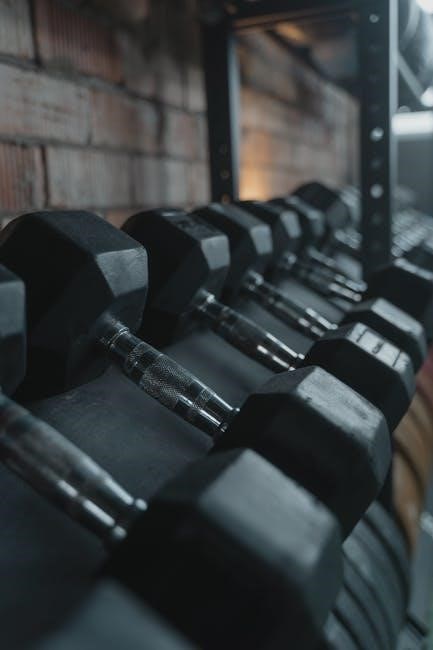
4.1 VMO Strengthening for Knee Osteoarthritis
VMO strengthening is highly beneficial for individuals with knee osteoarthritis, as it improves joint stability and reduces pain. Specific exercises, such as mini squats and straight leg raises, target the VMO, enhancing muscle activation and patellar alignment. These exercises help redistribute force across the knee joint, alleviating stress on damaged cartilage. Many rehabilitation programs incorporate VMO-focused routines to improve functional mobility and reduce discomfort. Regular practice of these exercises can significantly enhance quality of life for those managing osteoarthritis. Proper form and progressive resistance are key to maximizing benefits while minimizing the risk of further injury.
4.2 Post-Injury Rehabilitation Exercises
Post-injury rehabilitation exercises focusing on VMO strengthening are essential for restoring knee function and stability. Straight leg raises, mini squats, and step-ups are commonly recommended to activate the VMO without putting excessive strain on the knee. These exercises help improve muscle activation patterns, reduce pain, and enhance joint stability. Clamshell exercises and isometric contractions are also effective for targeting the VMO, promoting proper patellar tracking. Progression involves increasing resistance or difficulty as strength improves. Proper form and technique are critical to avoid further injury. A tailored rehabilitation program, designed by a physiotherapist, ensures a safe and effective recovery process, helping individuals return to normal activities and sports.

Practical Application and Safety Guidelines
Proper form and technique are essential to avoid injury. Use props like towels or resistance bands as guided. Start with low resistance and gradually progress. Monitor fatigue levels to ensure safety and effectiveness during exercises. Consult a physiotherapist for personalized advice and injury prevention.
5.1 Proper Form and Technique
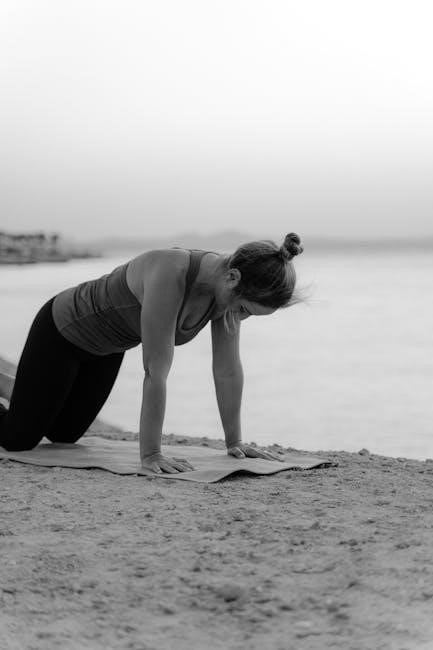
Proper form and technique are vital for effective VMO strengthening. When performing exercises like straight leg raises, ensure the knee remains straight and lift using the quadriceps. For mini squats, maintain a neutral spine and lower the body slowly. During clamshell exercises, focus on squeezing the thighs without arching the back. It’s essential to engage the core for stability and avoid compensatory movements. Using props like towels or resistance bands can help maintain form. Starting with controlled movements and gradually increasing intensity ensures safety and maximizes muscle activation. A physiotherapist can provide personalized guidance to correct form and prevent injury.
5.2 Avoiding Common Mistakes
Common mistakes during VMO exercises include poor posture, insufficient muscle activation, and overreliance on secondary muscles. For instance, during leg raises, letting the hip flexors dominate can reduce VMO engagement. Similarly, rushing through movements or using momentum can diminish effectiveness. Failing to maintain proper knee alignment, such as letting the knee collapse inward during squats, can strain the joint. Neglecting to fully contract the VMO or not holding the contraction long enough are additional pitfalls. To avoid these, focus on slow, controlled movements, engage the core, and ensure proper alignment. Using mirrors or feedback from a therapist can help identify and correct these errors, ensuring safe and effective training.
VMO strengthening exercises are essential for knee health and rehabilitation. For further guidance, download comprehensive PDF guides that detail exercises, techniques, and progression strategies for optimal results.
6.1 Summary of Key Points
VMO strengthening exercises are vital for enhancing knee stability and overall lower limb function. They target the vastus medialis oblique muscle, crucial for patellar tracking and joint health. These exercises include isometric contractions, straight leg raises, mini squats, and clamshell exercises, which can be modified to suit different fitness levels. Progression involves incorporating resistance bands and weights to increase intensity. For individuals with knee osteoarthritis or post-injury rehabilitation, VMO strengthening is a cornerstone of recovery. Proper form and technique are essential to avoid common mistakes and maximize benefits. Printable PDF guides provide detailed workout plans and illustrations, ensuring a structured approach to VMO training and rehabilitation.
6.2Recommended PDF Guides and Further Reading
Several PDF guides offer comprehensive insights into VMO strengthening exercises, providing detailed workout plans and illustrations. These resources are ideal for physical therapists, athletes, and individuals recovering from knee injuries. Titles like “VMO Strengthening Exercises” and “Quadriceps Rehabilitation Program” include step-by-step instructions for exercises such as inner range quadriceps, straight leg raises, and clamshell exercises. Many guides emphasize proper form and progression techniques, ensuring safe and effective training. They also address specific conditions like knee osteoarthritis, offering tailored exercise routines. These PDFs are readily available online and serve as valuable tools for anyone seeking to enhance knee health through targeted VMO exercises.